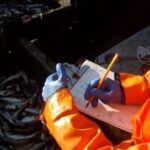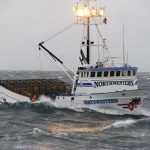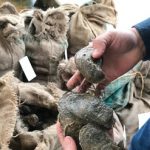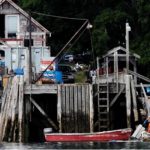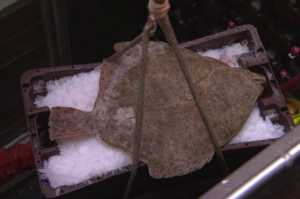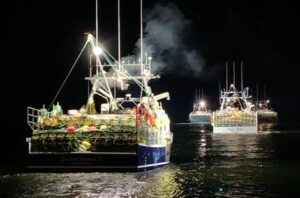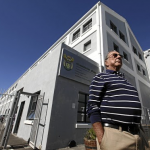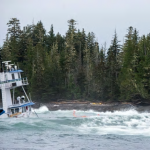Daily Archives: July 17, 2018
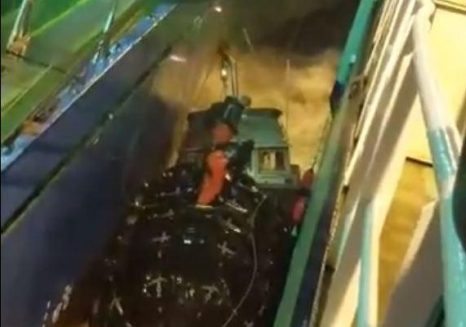
F/V Kristi sinks near Clark’s point, all onboard survive
Shortly after midnight on Saturday, July 14, the F/V Kristi lost power. The tide was coming in, and the boat floated in the current at 5 knots. While its skipper Jan Medhaug and deckhand Kyle Brojakowski worked to restore power to the 32-foot aluminum drift boat, Medhaug’s wife, Kayla Breeden went to the stern to hang a protective buoy. “When you’re out there fishing for that many days, you just think kind of everything is mundane, so I grabbed my buoy to go out there,” said Breeden. “I didn’t even put my rain jacket on and I almost didn’t put my boots on because I thought we were going to clear her.” She could see two large ships, which she estimated were “three football fields away.” >click to read<23:44
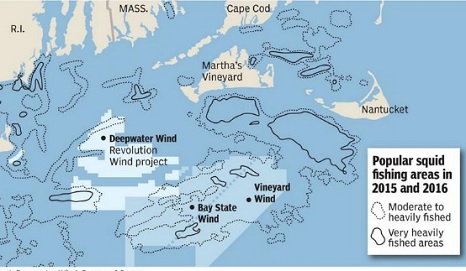
Now We’re Talking!! BOEM dressed down, wind farm companies get an earful at a meeting
Federal officials in charge of leasing ocean bottom land to offshore wind farm companies got an earful at a meeting with commercial fishermen Wednesday – and much of it was R-rated. There isn’t merely significant opposition to offshore wind farms; there is 100-percent agreement among the fishermen that the wind turbines will eventually put them out of business.,, Deepwater Wind, which has a project slated off the coast of Montauk called South Fork Wind and runs the Block Island Wind farm, was the subject of much of the ire and criticism,,, Ryan Fallon said he has spent his life on the water. “Everyone is against [the wind farms]. This is my life, my daughter’s life. I almost brought her here so you could look her in the eyes,” said Fallon, whose father was a commercial fisherman and bought him his first boat. “I’ve been doing this since I was 12. I’ll die before I let you take it away.” >click to read<20:37
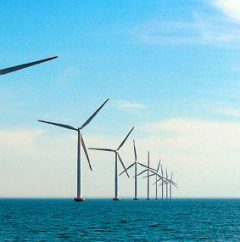
Deepwater Wind Offers Offshore Information, Fishermen Want Compensation
The Providence-based company recently announced a program to inform fishermen of where and when construction and other work occurs at the site of three wind facilities and their electric cables. The offshore wind developer hired liaisons to offer dockside information to fishermen at main fishing ports such as New Bedford, Mass., Point Judith, and Montauk, N.Y. Daily activity will be posted online about surveys, construction, and maintenance work. The updates will also be broadcast twice daily on boating radio channels, according to Deepwater Wind. Bonnie Brady, president of the Long Island Commercial Fishing Association, said the outreach by Deepwater Wind is window dressing. Deepwater Wind is “not doing anything at all. it’s a big, giant schmooze,” she said.,, Richard Fuka, president of the Rhode Island Fishermen’s Alliance, said he speaks with fishermen daily in Point Judith and he’s hearing the fishing stocks are down around the Block Island Wind Farm. >click to read<19:53
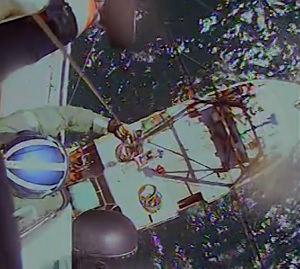
Coast Guard medevacs sick fisherman 6 miles off Nantucket
A Coast Guard Air Station Cape Cod aircrew medevaced a 40-year-old man experiencing abdominal pain Tuesday six miles southwest of Nantucket. The captain of the fishing vessel Provider notified Coast Guard watchstanders shortly after 2 p.m. of the sick crew member. An Air Station Cape Cod MH-60 Jayhawk helicopter crew was conducting prescheduled training in the area at the time and diverted to assist. The aircrew hoisted the fisherman to the helicopter and flew him back to Air Station Cape Cod where he was transferred to awaiting emergency medical services personnel. -USCG-19:29
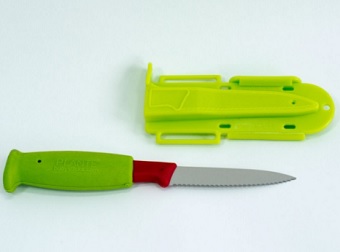
Island Fishermen’s Wives Association Knife distribution effort aims to keep lobstermen safe
According to the federal Centers for Disease Control and Prevention, commercial fishing is consistently ranked as the most deadly occupation in U.S. industry. Sadly, that comes as no surprise to anyone who lives along the coast of Maine, especially the women who are members of the Island Fishermen’s Wives. For lobstermen, one of the greatest risks is becoming entangled in the line that connects lobster traps to their marker buoys and being pulled overboard. >click to read<19:01

Maine: Pending bait shortage poses another threat to New England lobster industry
Regulators want to cap this year’s herring landings at last year’s levels, or 50,000 metric tons, and slash next year’s quota of the most popular lobster bait from 110,000 to 30,000 metric tons. They want to do this to offset record low numbers of newborn herring that are entering the fishery to replace those that are caught, eaten by other predators or die from natural causes. The 2019 quota could fall even lower if regulators adopt a separate proposal to leave more herring in the sea to feed the fish, birds and marine mammals that eat them, including Gulf of Maine species such as cunner, cod, seals, whales, puffins and terns. The New England Fishery Management Council could decide the issue as early as September. Eco-based Management. >click to read<10:51

The cost of offshore wind power: worse than we thought
A few days ago, the BBC’s Roger Harrabin mentioned a new suggestion that instead of cutting up redundant oil rigs, we should simply sink them to the bottom of the sea, where they would become artificial reefs that would encourage a flourishing of marine flora and fauna. Observant readers of his Twitter feed were of course quick to point out that this was exactly what BP had proposed for their Brent Spar platform nearly twenty years ago. At the time there was an outpouring from environmentalists, who accused the oil giant of deliberately polluting the seas.,, a recently published a paper on the potential decommissioning costs of all those offshore wind turbines that they are so keen on installing.,, costs for 34 turbines could reach £100 million ($131,654,735.40) >click to read<09:44
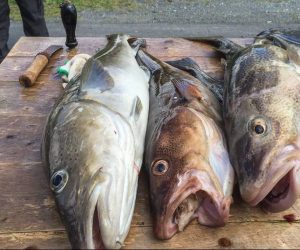
Harvey Jarvis – Ignore cod sentinel data at our peril
Twenty-three years ago, I helped lead a team that designed and implemented the cod sentinel inshore survey on Northern Cod (Southern Avalon, North East Coast and Labrador). The status of Northern Cod has been much in the news lately and the decision, by the Department of Fisheries and Oceans (DFO), to cut the commercial quota has been met with some stiff opposition from the FFAW-Unifor. This prompted me to do a little investigating to see what cod sentinel is telling us about Northern Cod. Based on a review of cod sentinel information, by opposing the 2018 quota reduction by DFO, I can only conclude that the FFAW-Unifor and the Groundfish Industry Development Council (GIDC) appear to be ignoring the last five years of sentinel data. According to information that I have been able to piece together, cod sentinel results are as follows: >click to read<09:03
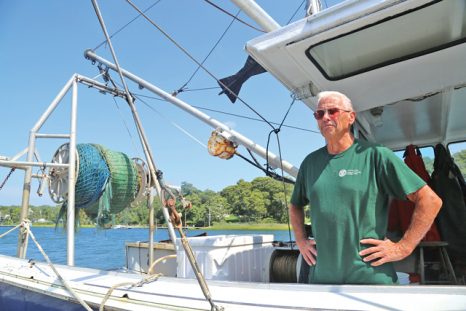
New York Commercial fishermen hit with two-week fluke fishing closure
The closure began Sunday, and when it reopens Aug. 1, fishermen will be limited to a daily limit of 50 pounds of fluke. “That’s not even a box of fish,” said Riverhead fisherman Phil Karlin, who noted boxes are typically 60 or 70 pounds. The state Department of Environmental Conservation that enforces the federal quota restrictions notified fisherman of the closure via mail several days before, saying it was necessary to preserve fish for the fall, Mr. Karlin said. “It’s putting a hardship on all fishermen,” Mr. Karlin said. “We’ve had it tough as it is. To close it in the middle of the summer like this is not good.” >click to read<07:49

































